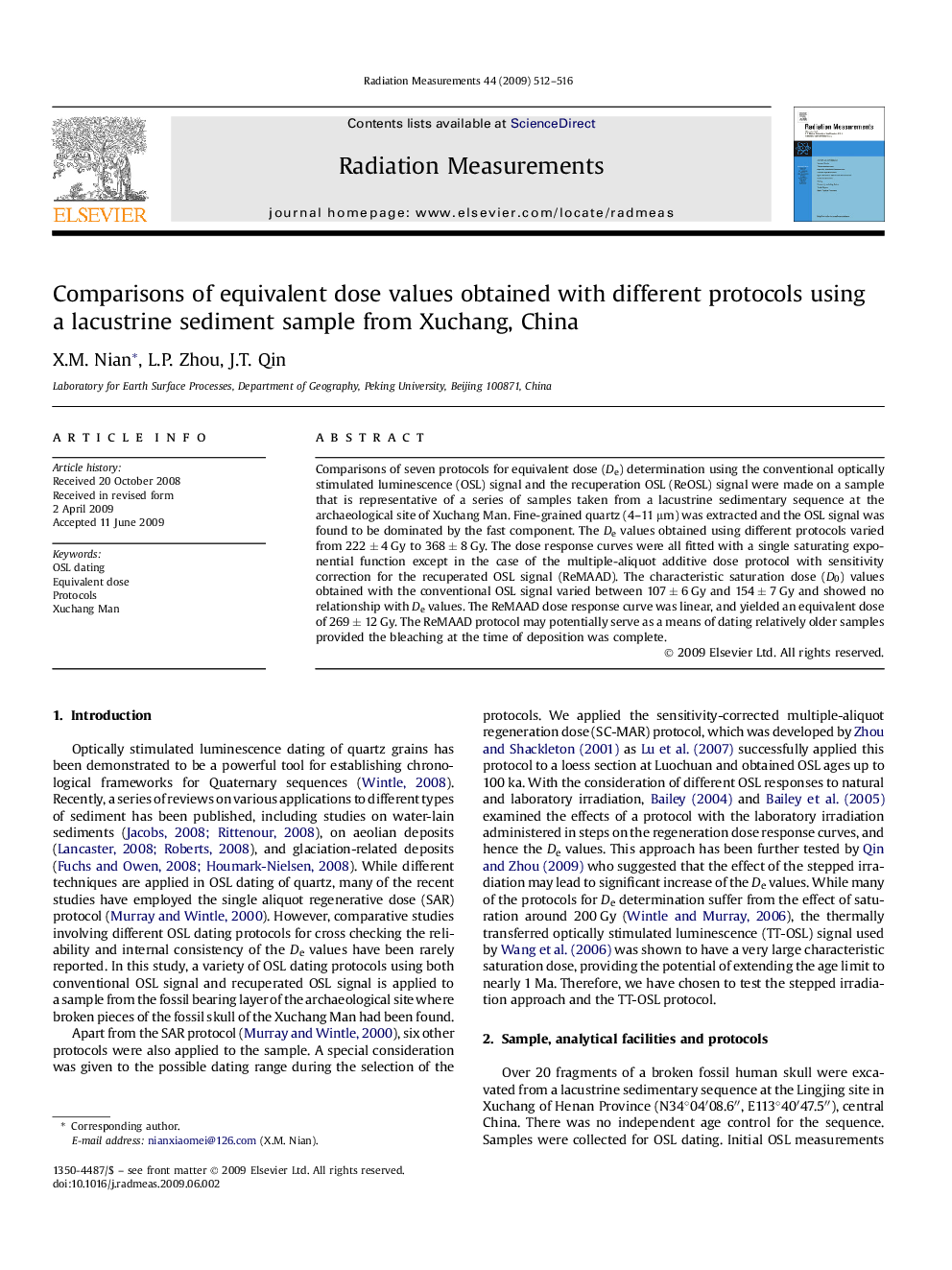| Article ID | Journal | Published Year | Pages | File Type |
|---|---|---|---|---|
| 1881217 | Radiation Measurements | 2009 | 5 Pages |
Comparisons of seven protocols for equivalent dose (De) determination using the conventional optically stimulated luminescence (OSL) signal and the recuperation OSL (ReOSL) signal were made on a sample that is representative of a series of samples taken from a lacustrine sedimentary sequence at the archaeological site of Xuchang Man. Fine-grained quartz (4–11 μm) was extracted and the OSL signal was found to be dominated by the fast component. The De values obtained using different protocols varied from 222 ± 4 Gy to 368 ± 8 Gy. The dose response curves were all fitted with a single saturating exponential function except in the case of the multiple-aliquot additive dose protocol with sensitivity correction for the recuperated OSL signal (ReMAAD). The characteristic saturation dose (D0) values obtained with the conventional OSL signal varied between 107 ± 6 Gy and 154 ± 7 Gy and showed no relationship with De values. The ReMAAD dose response curve was linear, and yielded an equivalent dose of 269 ± 12 Gy. The ReMAAD protocol may potentially serve as a means of dating relatively older samples provided the bleaching at the time of deposition was complete.
